A club trip with a Saturday 9am start feels a bit decadent. Grabbing some extra large almond croissants on the way to the meeting point, more so. Even better though is the cause we are off to support – helping the Friends of Baring Head Trust in their work to restore the natural habit around Baring Head and East Harbour Park.
Shauna, our trip leader, is waiting at the station to give us an initial briefing on what we were letting ourselves in for that weekend – likely some weeding, planting, and maybe the opportunity to chat to a group on the look out for katipo. This was the first time WTMC had run one of these trips, so we’d just head along and see how we could help.
We proceed off in convoy on the leisurely cruise from Wellington up the Wainuiomata Rd to rendezvous with Paula Warren – chair of the Trust and our guide/supervisor for the weekend. The access road is private, but a gate, super new bridge and steep track drive later, we pull up a short walk from the lighthouse complex.
Set atop a bluff with cracking views over the Cook Strait and back to Wellington, the Baring Head lighthouse opened in 1935. It was manned by on-site lighthouse keepers until, in 1989, automation rendered obsolete the need for round-the-clock human supervision.
We emerge into an open grassy area, home to a scattering of well-established trees and several functional buildings. Two keeper houses surround a garage and a storage shed that previously housed the generator. The lighthouse itself is nearby, poised atop the headland. Paula tells us it’s one of possibly only two lighthouse complexes in Aotearoa with all original buildings still remaining. It’s part of what gives Baring Head its charm, and something the Trust is hoping to preserve for generations to come.
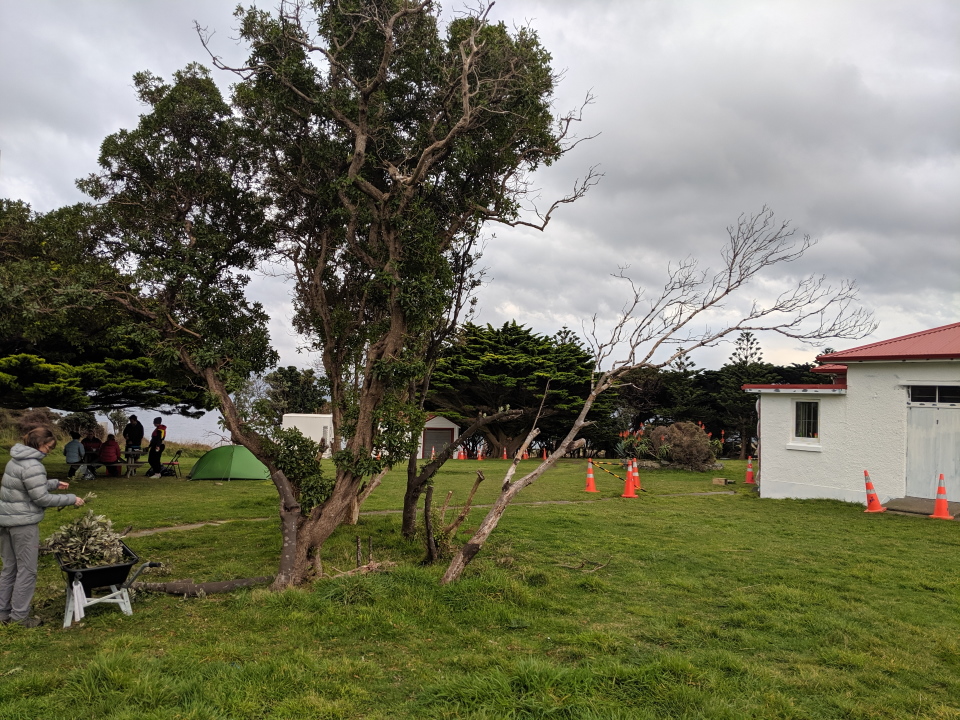
Though it’s not yet afternoon, the first order of business is to select a spot to pitch our tents in preparation for the early mid-winter darkness. Some choose a snug, tucked out of the way behind a keeper’s lodge, others aim to find the best view – there are plenty to choose from. It’s also possible to set up mats and sleeping bags inside one of the buildings if needed, but the weather looks to be so pleasant that we all end up picking the canvas.
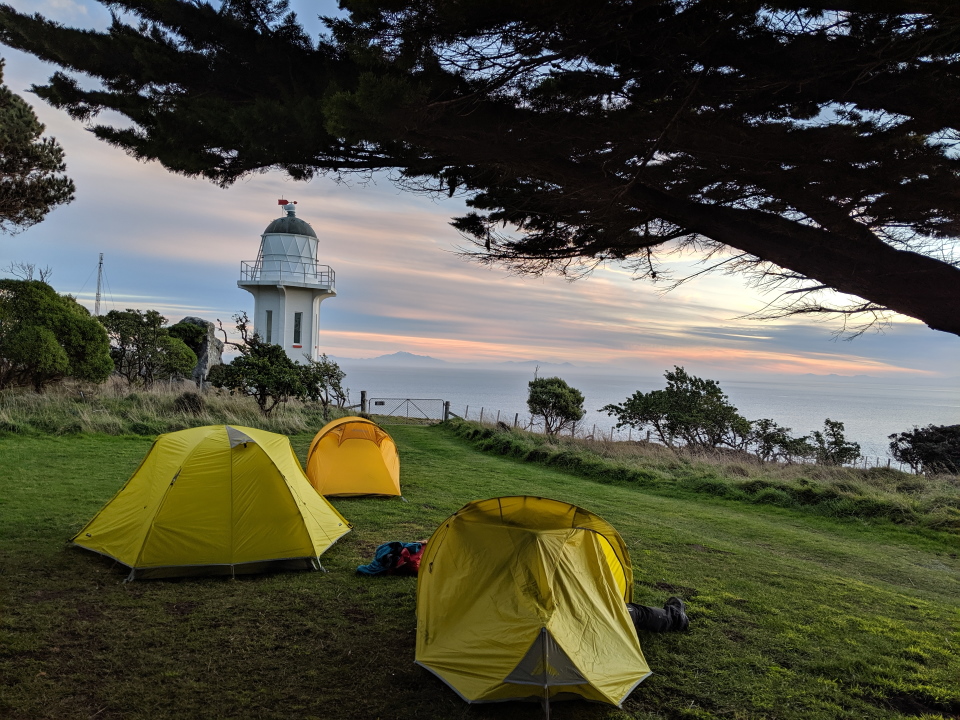
With our accommodation sorted, it’s time to get our instructions for the rest of the day and “tool up”. Tasks for volunteers are varied and depend on what’s required that weekend. Paula explains the main objective for today – to weed the invasive lupin from a swathe of beach to enable native grasses to reclaim the area, and help rebuild habitat more supportive of indiginous species.
We join a few other volunteers in collecting heavy duty gloves and a range of rather serious looking gardening pickaxes and telescopic secateurs – just how big are these weeds anyway? – and make our way down the steep goat trail that leads to our target section of beach. Sturdy boots are advisable for this descent, though there is an alternative route down that’s less steep but much longer.
Paula shows us the pesky lupin we are targeting and demonstrates some nifty removal techniques. As I survey the beach more closely, the prevalence of lupin becomes apparent, and I’m glad that there’s a good few of us there that day.
Training complete, we’re spoilt for choice as we scatter to pick our first target plants. Recalling that I’m not a natural gardener, I return to show a leaf sample from my intended victim to Paula to check that I’m not about to rip up a pristine example of the indigenous spinifex that is making a gradual come-back on parts of the beach. Test passed – it is indeed lupin.
Over the course of the next several hours I find my mindset moving from initial qualms about destroying well-established plants, to a surgeon’s fascination at the different types of lupin root systems, to a burning vendetta against the few stubborn lupin refusing to be moved.
Lunchtime arrives and we break out our sandwiches, taking shelter from the sun behind one of the larger boulders. The day is clear, and there’s not a breath of wind – a recipe for constant reapplication of sunscreen despite it being June. We feel lucky there is no southerly, as the beach is quite exposed on that aspect. Paula has brought along some kind of delicious homemade chocolate snacks we hungry gardeners relish as dessert.
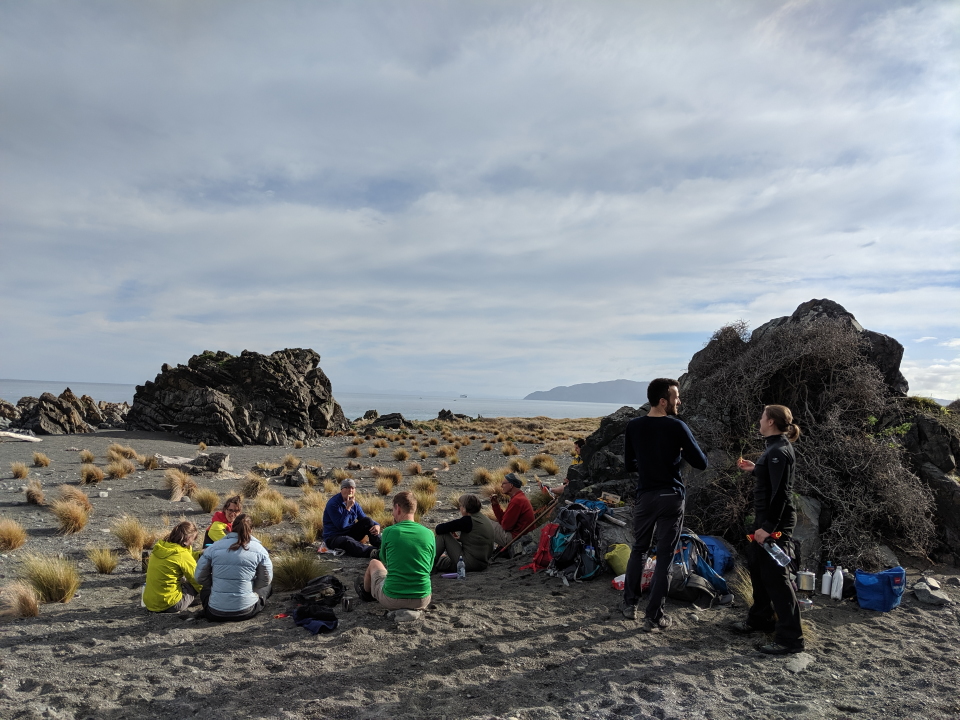
At the end of the break, the group of zoologists looking for katipo comes around the headland and tells us about their morning: lots of evidence of katipo in residence and even a snatched photograph of one.
Then it’s back to work. David heads off to check the trapping line he manages, and the rest of us return to the lupin. By now, we are much faster at the extraction, working in gangs of twos or threes, and some even with a patented “crouch and roll” technique that never seems to fail no matter how deeply embedded the core root.
A number of our party are climbers, and they set about scaling the higher boulders to remove the lupin clinging somehow to their rocky features. We collect driftwood from close to the shore and bring it further up the beach to create new invertebrate habitat, a change in motion that provides welcome variety for muscles already starting to ache.
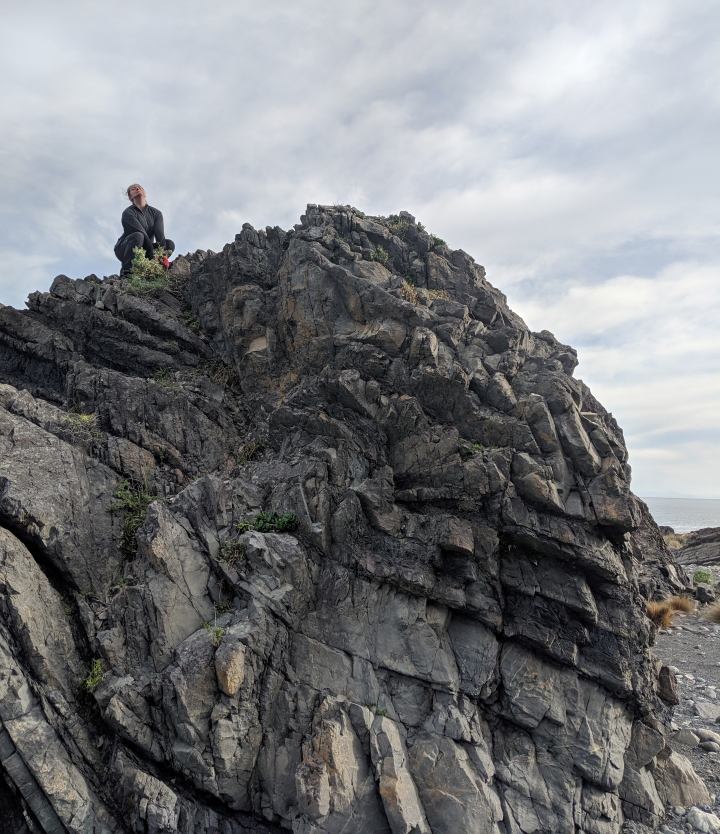
The sun accelerates towards the horizon as the day nears its end. Though we all feel tired, there’s a final mustering of effort to try to clear “just one more”, and then one more after that. Eventually, we down tools and take stock of our achievement. This part of the beach is by no means cleared of lupin, but there is a satisfying dent in its prevalence.
We head back to the goat track with the contented high of office workers after a rare day of hard manual activity, and now looking forward to a hearty supper. On the way, we pass the iconic Baring Head boulders, and the climbers among us regret they didn’t bring climbing shoes. The boulders are very accessible from the lighthouse complex and would have made a great Sunday activity.
As darkness descends, our focus turns to dinner which is to be a classic WTMC cookbook affair. There’s usually a supply of utility water available from a butt on site, but drinking is not recommended. Paula has brought sufficient drinking water up from Wellington that morning, but future trips should consider bringing up a good supply of water for cooking and drinking. Waste is all packed out and there is a standard issue long drop on site.
Preparation begins outside, but soon moves into the old generator building as the evening cold starts to bite. The generator is long gone with only the concrete foundation block remaining, so head torches light the meal we share with the other volunteers in the now quietened engine room from the past.
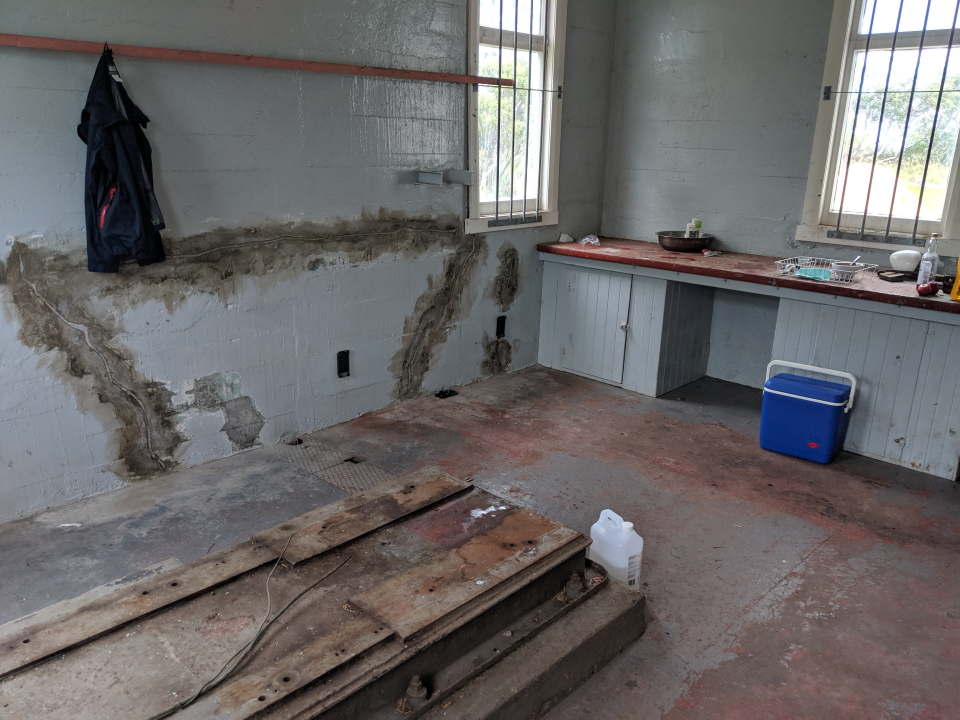
Most retire early to bed soon after dinner, pausing briefly to take in the great show in the night sky that clear evening. Looking out to sea, the beam from the lighthouse slowly sweeps across the choppy waters, deliberate and reassuring.
We wake the next morning, breakfast and dismantle the tents. By the time we are ready, Paula is already off to meet another couple of volunteers to put in a line of plants on the border of the parking area to help contain cars to the graveled section. Our group had only signed up for Saturday duties with the idea we’d aim for a tramp nearby on Sunday, but the lure of planting proves too much to resist, and we get stuck in. Cheekily, the other volunteers have already done most of the hard work digging the holes, so we help site the new seedlings and protect each with a wire mesh surround.
Now it’s late morning, and we say farewell to Baring Head and the Friends, promising to return to help again soon. Assessing the time and threatening weather, the consensus is to skip the tramp and head back to Wellington. We make two short detours, the first for another walk along the beach from the access car park a little further up the Coast Road, and the second to Petone for a (perhaps less-well-deserved today) cafe lunch.
All in all, a superb weekend – and tremendous thanks to Paula and the Friends of Baring Head for hosting us in what really is a unique place, both for its natural and historical interest.
There’s so much more work to be done – so look out for the next trip on the schedule!
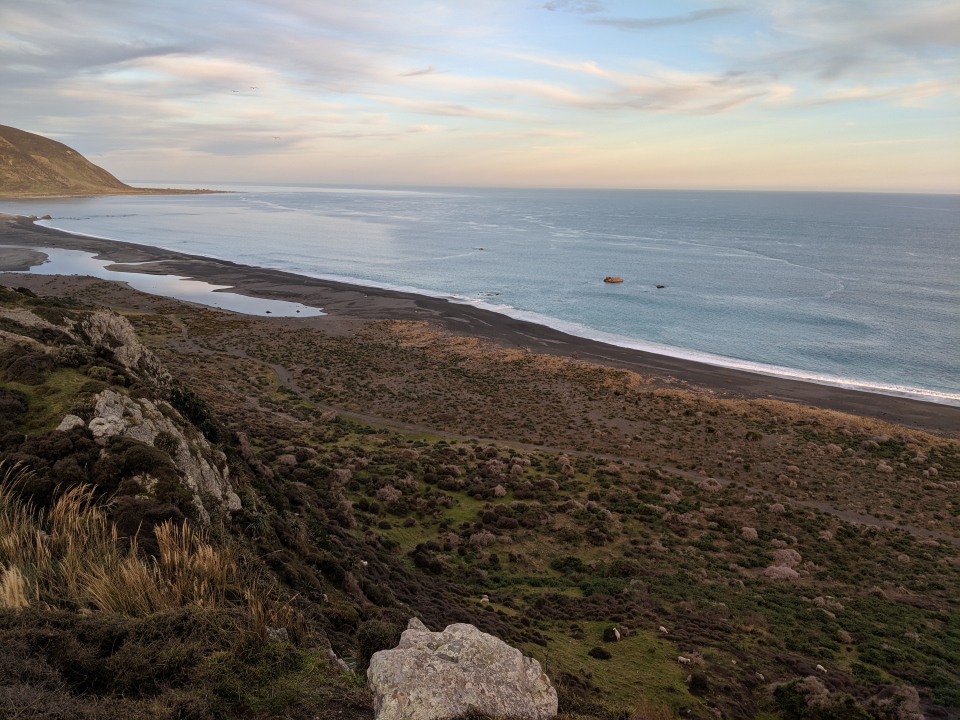
(Author’s note – this report is from a trip back in winter 2019, sorry everyone for the delay.)
